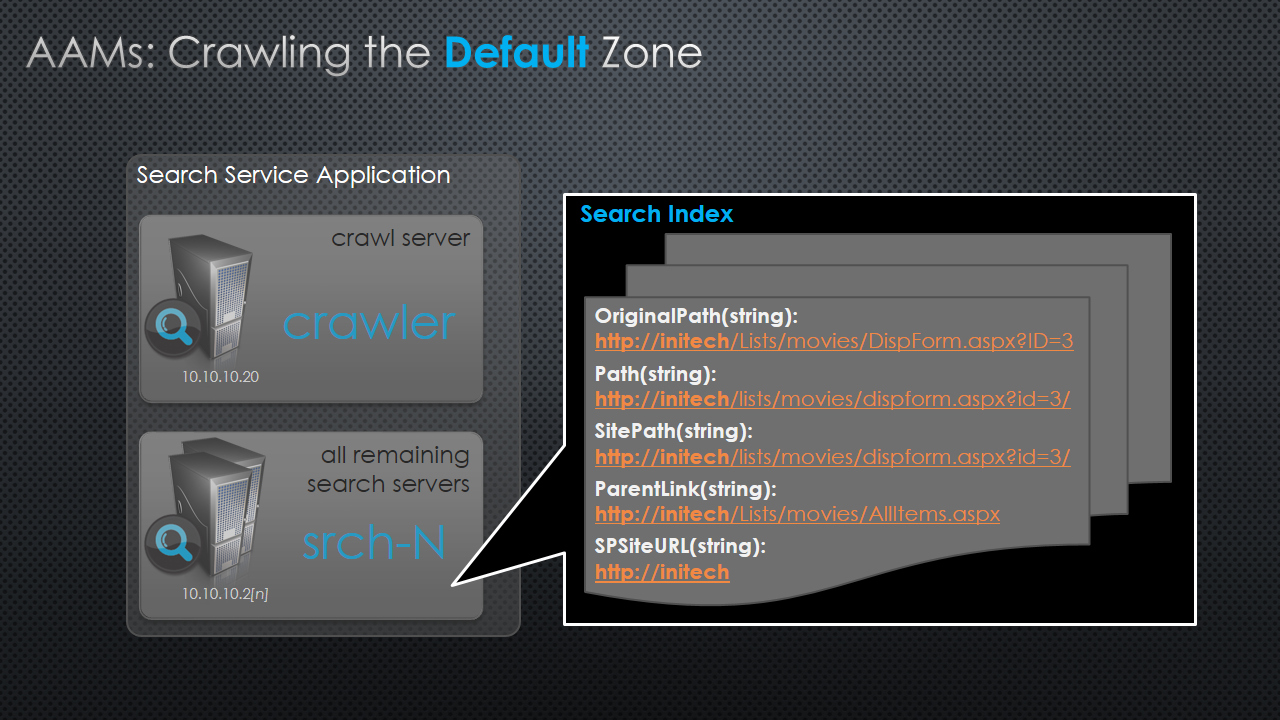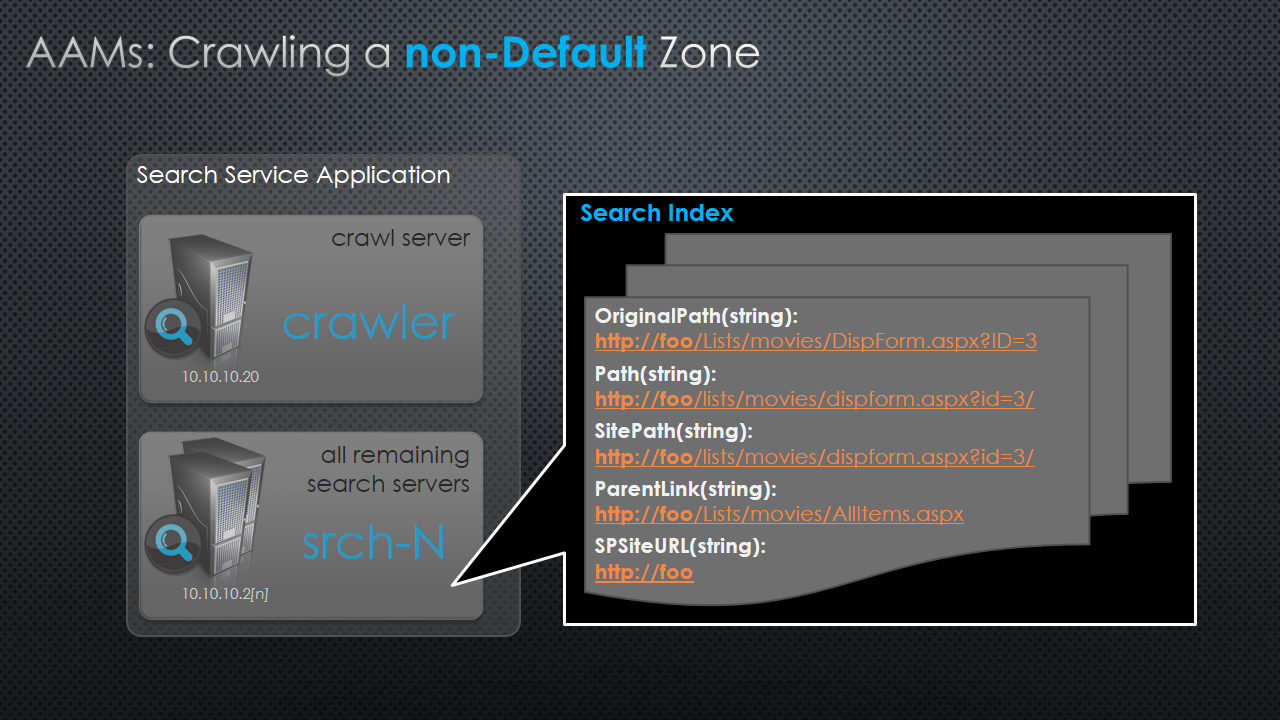AAMs *Explained : Redux (and Presentation)
I recently gave a talk around AAMs and wanted to post my slides here (attached below as AAMExplained.xps).
This post is intended to complement my previous post on AAMs, but these slides go a little further by starting to explore the impacts to crawls and URL-based properties in the index (these slides relating to search also help explain the behaviors I described in my post Beware crawling the non-Default zone for a SharePoint 2013 Web Application, but I plan to more formally tie these all together in a future post).
The key takeaways for AAMs include:
- “Public refers to the URL of an externally accessible Web site. The public URL is the base URL that [SharePoint Server] uses in the pages that it returns.”
- “Internal [or in OM, "Incoming"] refers to the URL of a Web request as it is received by the [SharePoint Server]”
- “Alternate access mappings enable a Web application that receives a request for an internal [incoming] URL, in one of the five authentication zones, to return pages that contain links to the public URL for the zone”
It's also worth noting that these pictures are just slides I chose to highlight in this redux post (there are several more in the attached deck)







